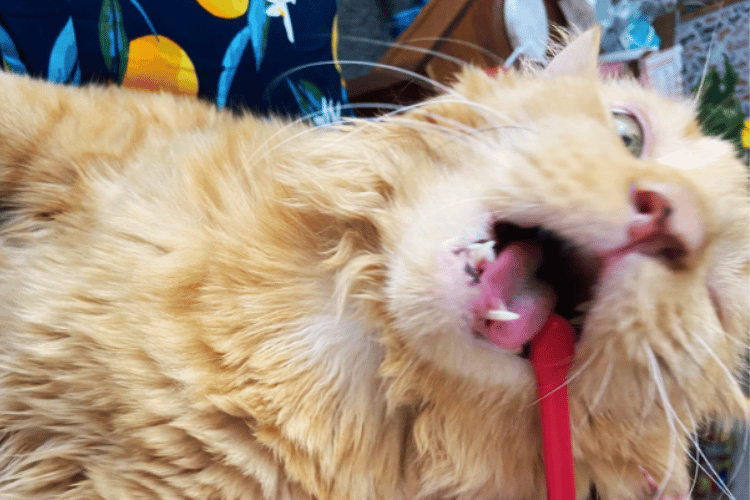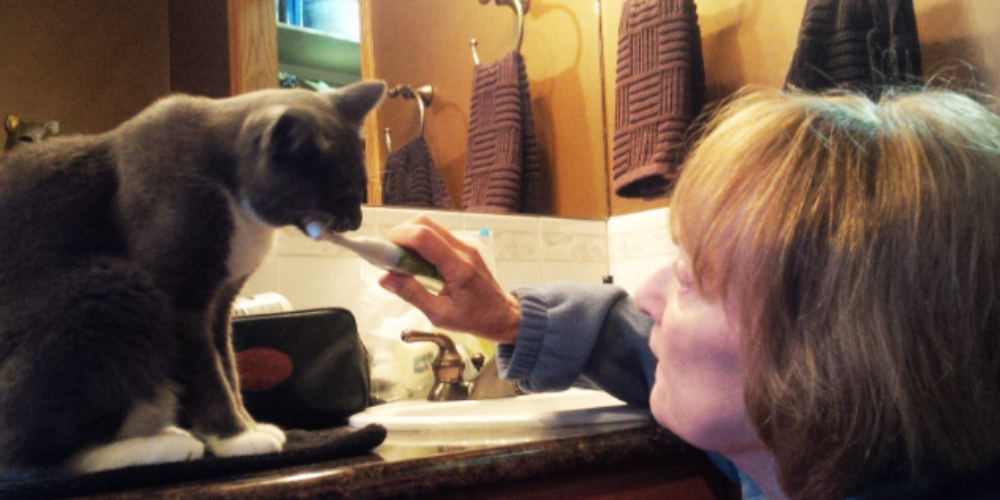Are you a cat owner who dreads the thought of having to brush your furry friend's teeth? You're not alone. Many pet owners struggle with getting their cats to cooperate during dental care.
However, proper dental hygiene is essential to your cat's overall health. In this article, we'll explore the best techniques to brush an unwilling cat's teeth, so you can provide the best care for your feline friend.
We'll cover topics such as the right tools to use, tips to make the process more comfortable for your cat, and how often you should brush their teeth. Join us on this journey to discover how to make your cat's dental care routine a breeze.

Tips for Brushing an Unwilling Cat's Teeth
Brushing a cat's teeth can be a difficult task even for experienced cat owners. Some cats simply do not like having their teeth brushed, and this can make the task challenging. Here are some tips that can make brushing your cat's teeth easier and less stressful for both you and your cat.
Introduce your cat to the toothbrush gradually
Before you even attempt to brush your cat's teeth, you should familiarize them with the toothbrush. Start by letting your cat sniff the toothbrush and get used to it. You can also give your cat treats while holding the toothbrush, so she develops positive associations with it.
Choose the right toothbrush and toothpaste
Select a toothbrush that is specifically designed for cats. You can find toothbrushes with soft bristles at your local pet store. Also, get toothpaste that is specially formulated for cats. Never use human toothpaste as it can be toxic to cats.
Start slowly
Begin by gently lifting your cat's lip and rubbing your finger along their gums. This will get them used to having something in their mouth. You can then slowly introduce the toothbrush, letting your cat sniff it before putting toothpaste on it.
Use the right technique
Place the toothbrush at a 45-degree angle to the teeth and gently brush back and forth. Focus on the outside of the teeth, where most of the plaque builds up.
Be patient and persistent
Brushing your cat's teeth is not something that will happen overnight. It can take several weeks or even months of gradual introduction and training before your cat is comfortable with the toothbrush. Stick with it and stay persistent.
Reward your cat
Praise and reward your cat with treats or play after each successful brushing session. Positive reinforcement can go a long way in helping your cat develop good oral hygiene habits.
Schedule regular veterinary check-ups
Regular visits to the vet are important for maintaining your cat’s dental health. Your vet can recommend products that can help reduce plaque buildup and identify any problems early on.
In conclusion, brushing your cat's teeth doesn't have to be a daunting task. With patience, persistence, and the right technique, it can be a routine and important part of your cat's oral hygiene. Remember to introduce the toothbrush and toothpaste gradually, use the right technique, and reward your cat for a job well done. Regular veterinary check-ups are also crucial for maintaining your cat’s dental health.

FAQs How to Brush an Unwilling Cat's Teeth
It can be a challenge to brush an unwilling cat's teeth, especially when they don't want to cooperate. Trying to get your cat to sit still and let you brush their teeth can be a daunting task.
But it's important to keep your cat's teeth clean and healthy, so how do you do it? We've compiled a list of the most frequently asked questions about brushing an unwilling cat's teeth so you can know more about this important task.
What tools and products do I need to brush my cat's teeth?
To brush your cat's teeth, you will need a few essential tools and products:
- A feline toothbrush or a soft-bristled toothbrush specifically designed for cats.
- Cat-friendly toothpaste that is specially formulated for pets. Never use toothpaste intended for humans, as it can be harmful to cats.
- Optional: Dental wipes or gauze pads for cats who are more resistant to toothbrushes.
How can I train my cat to accept the tooth brushing process?
Training your cat to accept tooth brushing may take time and patience. Here are some tips to make the process easier:
- Start by gently touching your cat's mouth and getting them used to the sensation.
- Gradually introduce them to the taste of toothpaste by allowing them to lick a small amount from your finger.
- Slowly transition to using a toothbrush or dental wipes by rubbing them along your cat's teeth and gums.
- Associate positive experiences with tooth brushing by rewarding your cat with treats or praise after each session.
- Take it slowly and be consistent, gradually increasing the duration of each brushing session as your cat becomes more comfortable.
Are there any potential risks associated with brushing a cat's teeth?
While brushing your cat's teeth is beneficial for their oral health, there are a few potential risks to be aware of:
- Scratches or bites: Cats may resist tooth brushing and may scratch or bite if they feel threatened. Take caution and use gentle handling techniques.
- Dental issues: If your cat already has dental problems or gum disease, brushing their teeth may cause discomfort. Consult with your veterinarian before starting a brushing routine.
- Ingestion of toothpaste: Always use cat-friendly toothpaste and ensure your cat does not swallow excessive amounts. Consult the toothpaste packaging for usage guidelines.
Is professional help necessary for brushing a cat's teeth?
Professional help is not always necessary for brushing your cat's teeth, but it can be beneficial. Veterinarians or veterinary technicians can provide guidance on proper techniques and offer advice tailored to your cat's specific needs. They may also perform dental cleanings under anesthesia if your cat requires a more thorough cleaning.
Are there any alternatives to brushing a cat's teeth?
If your cat refuses to tolerate tooth brushing, there are alternative methods to maintain their oral health:
- Dental treats and chews: These specially formulated treats can help reduce plaque and tartar buildup.
- Dental diets: Certain cat foods are designed to promote dental health by reducing plaque and tartar.
- Water additives: These products can be added to your cat's drinking water to help prevent dental issues.
- Topical gels and oral rinses: These products can be applied directly to your cat's teeth and gums to promote oral hygiene.
Remember, regular dental check-ups with a veterinarian are essential for monitoring your cat's oral health and addressing any underlying issues.
Brushing an unwilling cat's teeth can be a challenging task, but there are some methods you can use to make it easier. Start by introducing the toothbrush slowly and consistently. Additionally, make sure to use a toothpaste specifically designed for cats, as well as a toothbrush that has soft bristles. Finally, use treats and positive reinforcement to make the brushing experience more enjoyable for your cat.
With these tips in mind, you can rest assured that brushing your cat's teeth doesn't have to be a battle. With a little patience and perseverance, you can ensure that your cat's teeth stay healthy and clean.
Thank you for visiting LegitLists we hope this helps you make a legitimate choice!






